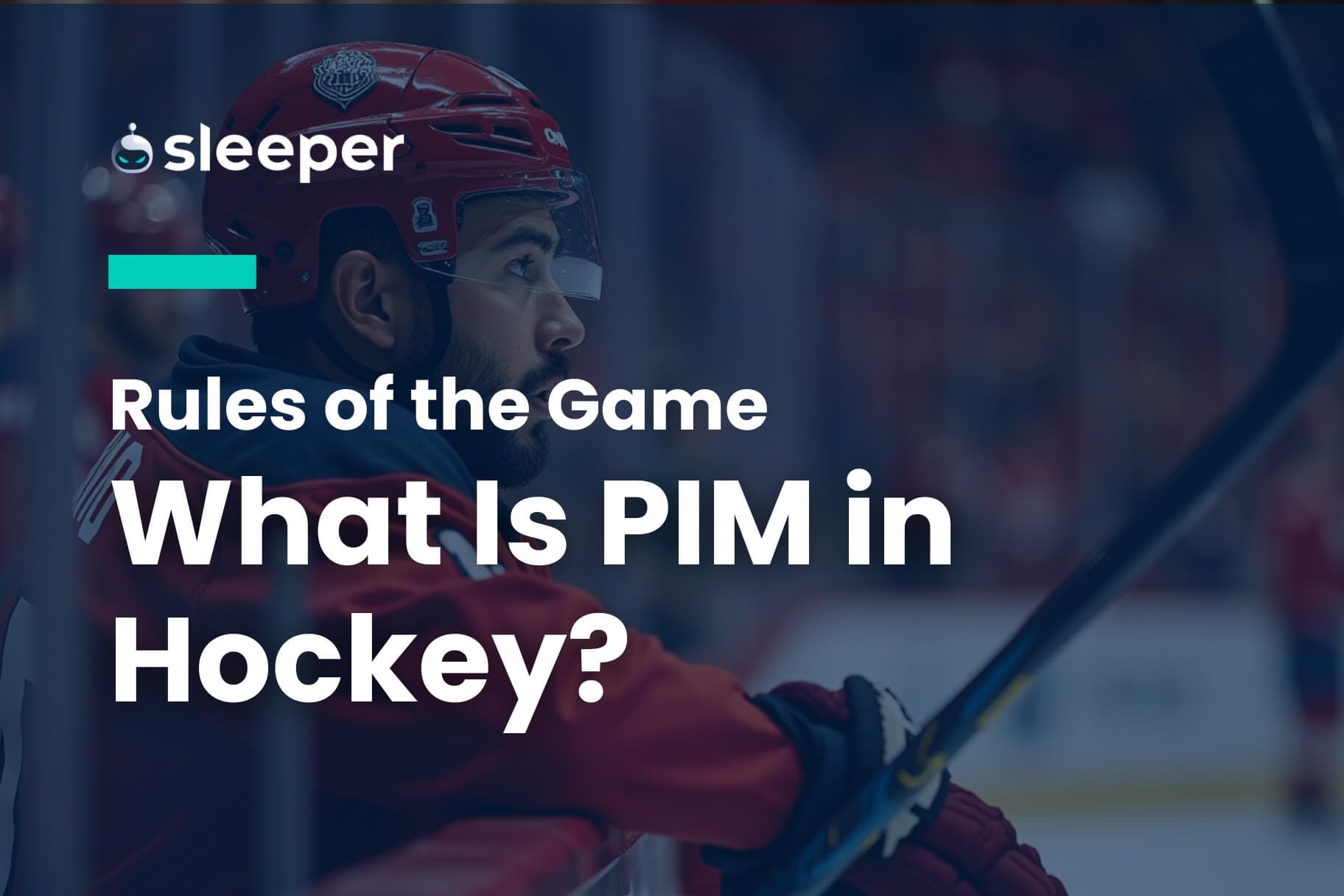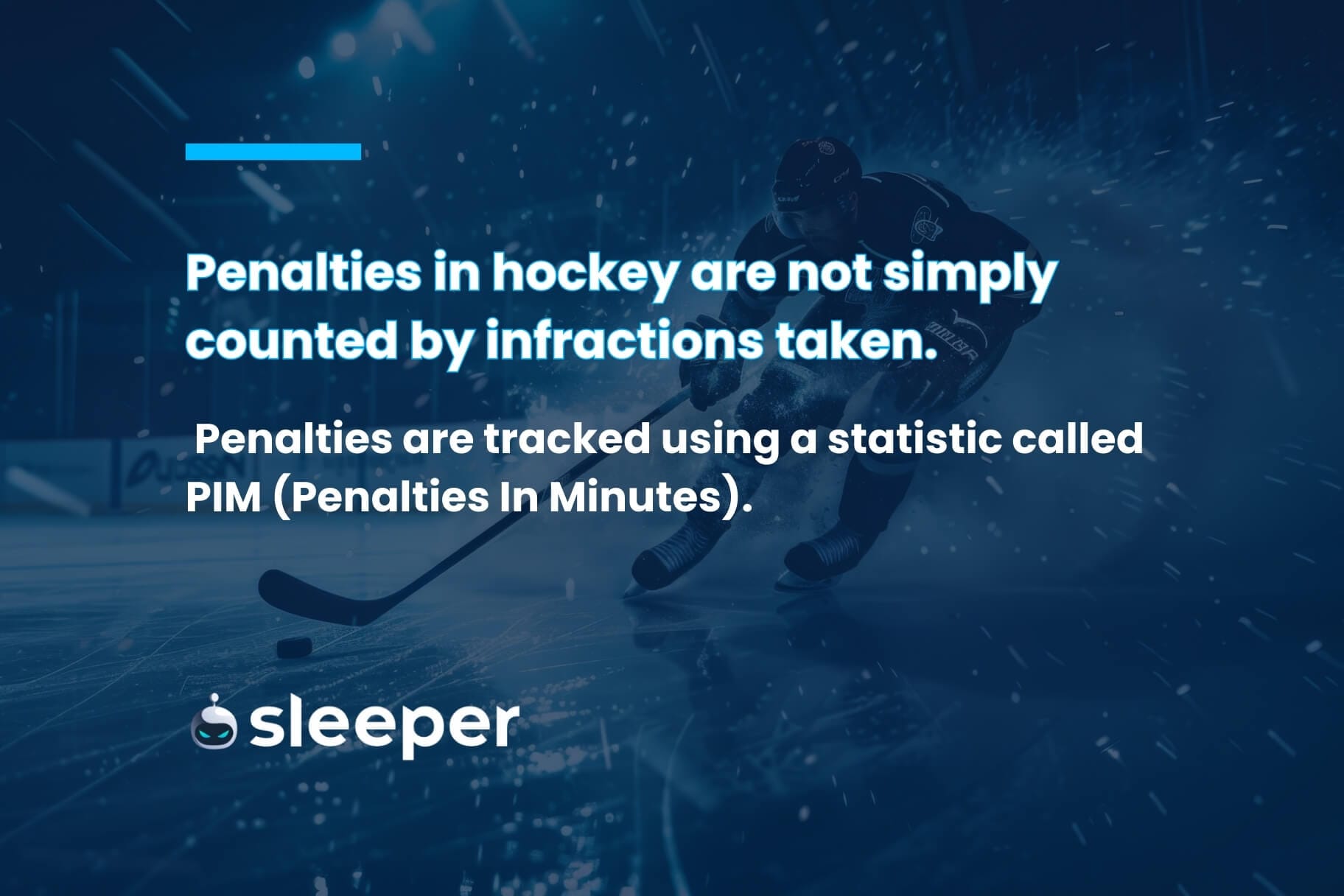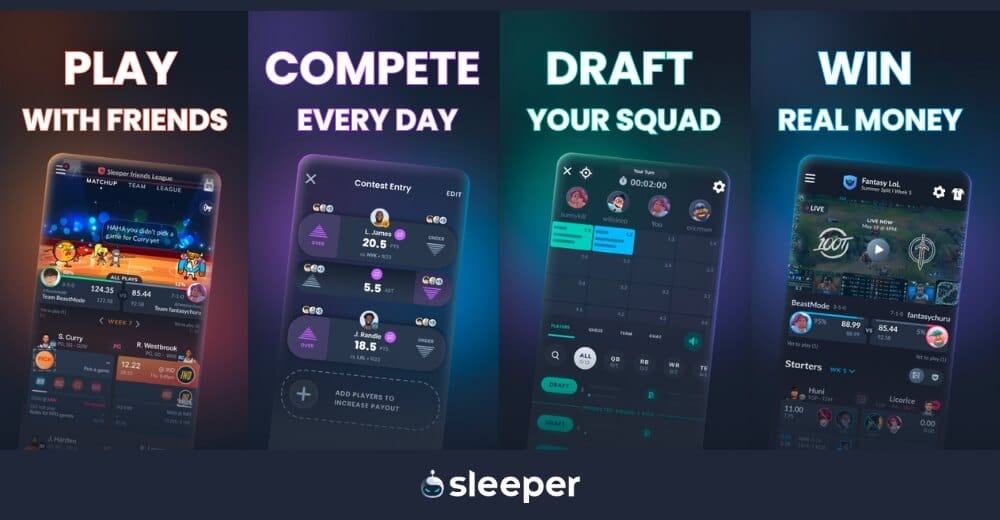Penalty minutes (PIM) are an important part of hockey and fantasy hockey alike. Let’s dive into what they are and how they work.

Penalty minutes (PIM) play a crucial role in hockey, affecting both the flow of the game and your fantasy hockey roster. This article breaks down what PIM means, the types of penalties that contribute to it, and how it impacts player and team performance. Learn how fantasy hockey managers can use PIM to their advantage and balance high-penalty players with strategic picks to maximize fantasy points!
What Is PIM in Hockey? All About Penalty Minutes
Hockey is one of the unique sports in that players can be penalized and their team goes shorthanded for a set period of tie. Players called for a penalty go to the penalty box for two, four, five, or upwards of 10 minutes depending on the infraction.
Penalties in hockey are not simply counted by infractions taken, though. Penalties are tracked using PIM (Penalties In Minutes).
What Is a PIM in Hockey?
In hockey, PIM stands for penalties in minutes, although the full term is rarely used. PIM measures the total amount of minutes that a player is penalized for whether or not they serve the full penalty in the event of a power-play goal.
Penalties taken by a player contribute to that skater’s PIM and usually causes their team to be shorthanded for a set amount of time.

Types of Penalties (PIM) in Hockey
Minor Penalty
A minor penalty is the most common infraction called in hockey. This can be your standard tripping, slashing, hooking, holding, interference or other calls in a hockey game.
A player is assessed two PIM for a minor penalty and sometimes a double-minor is called in which that skater gets four PIM. If coincidental minor penalties are called, the teams may skate at 4-on-4 for that length of time.
Major Penalty
A major penalty, as you may assume based on its name, is a more serious infraction than a minor penalty. A five-minute major penalty is the most common and is usually called for fighting or a particularly dangerous play.
When both players are assessed five-minute fighting majors, the teams still play at 5-on-5 despite two players being in the penalty box.
Misconduct Penalty
There are two types of misconduct penalties in hockey: a 10-minute misconduct and a game misconduct. A game misconduct ejects a player and is used in rare cases.
The 10-minute misconduct penalty is also pretty rare but a referee may call it on a player for unsportsmanlike conduct or to try to settle the game down if things are getting out of hand.
See also: What Is Penalty Kill in Hockey?
The Evolution of PIM Throughout Hockey History
The concept of penalties and PIM in hockey has evolved over the years.
Initially, a penalty simply caused a faceoff to occur. Then players were given two warnings but a third infraction would remove them from the game. The current concept of a player being taken off the ice for a penalty started in 1904 with players being called for two-, three-, or five-minute penalties; but the team did not lose a man on the ice.
All penalties were five minutes in 1914 but that was taken down to three minutes in 1916. Upon the founding of the NHL in 1917, teams would become shorthanded when a player was assessed a penalty.
While PIM are not an overly important stat in today’s game, knowing which players rack up the penalty minutes can be crucial in fantasy hockey.
How Penalties and PIM Affect a Hockey Game
Hockey is at its smoothest when its played at 5-on-5 with few whistles and penalties. A penalty disrupts the natural flow of the game with a team having to be shorthanded for a few minutes.
At the same time, a penalty kill can give a team momentum if they’re able to successfully fend off the opposing power play.
There’s also a chance of penalties going back and forth with both teams racking up the PIMs in a game. This can either be due to an overly physical game or the result of the officials calling a tight game with a stricter interpretation of the rules.
Famous PIMs in NHL History
The role of an enforcer or “goon” in hockey has dwindled with more speed and skill in today’s game. However, PIMs were an important part of the game back in the day with some players being known for their combativeness on the ice.
Dave “The Hammer” Schultz
Dave “The Hammer” Schultz holds the NHL record for most PIM in a season with 472 in the 1974-75 campaign. The Philadelphia Flyers forward racked up 63 more PIM in that season than anyone else has had in a single year in the history of the league.
He also holds the record for the fourth-most PIM in a season with 405 in 1977-78.
Schultz’s physicality epitomized the Broad Street Bullies mentality of those Flyers teams in the 1970s that won back-to-back Stanley Cups in 1974 and 1975.
Dave “Tiger” Williams
Dave “Tiger” Williams holds the record for most PIM in an NHL career and it isn’t particularly close. The forward compiled 3,971 PIM in 962 games across 14 NHL seasons.
While Schultz played most of his career in Philadelphia, Williams was a mercenary with six years in Toronto, five years in Vancouver, four years in Los Angeles, and a single season each with Detroit and Hartford.
He was a true enforcer who was also able to put the puck in the back of the net with 241 career goals, including logging 10 seasons with at least 15 goals.
Chris Chelios
Chris Chelios is a Hall of Fame defenseman that made use of all aspects of the game. He could contribute offensively, played solid defense, and wasn’t afraid to take a penalty or two to let you know he was there.
Chelios’ career spanned from the physical ‘80s to the post-lockout era in 2010. He has the 12th-most PIM all-time with 2,891 in 1,651 games for the Canadiens, Blackhawks and Red Wings, and seven games with the Thrashers.
The tough defenseman won three Norris Trophies and matched that with three Stanley Cups to round out his Hall of Fame career.
Dale Hunter
Dale Hunter is right behind Williams with 3,565 PIM, registered in over 400 more games (1,407) with Quebec and Washington.
The feisty forward had over 100 PIM in each of his 19 seasons with 200+ PIM in 11 separate campaigns. He finished in top-10 for the Selke Trophy in two different seasons and scored 20+ goals in nine years as well.
Hunter was an old-fashioned, um, hunter on the ice that could do it all for his team.
Marty McSorley
Marty McSorley combines a bit of all of the above players. He has the fifth-most PIM in a single season with 399 in the 1992-93 campaign with the Los Angeles Kings and the fourth-most PIM in history with 3,381.
McSorley was a bit of a unicorn in that he could play both defense and forward. That helped him win back-to-back Stanley Cups with the Edmonton Oilers in 1987 and 1988.
He ultimately retired after assaulting Donald Brashear with his stick in 2000, which led to him receiving a criminal conviction.
Further Reading: The Best NHL Hockey Players of All Time
How Do PIMs Affect Fantasy Hockey?
Fantasy hockey has an interesting relationship with PIMs. While some leagues view PIMs as a positive, there are some others who treat it as a negative category. Make sure to check your fantasy hockey league settings to see which it is for you.
If PIMs are negative, you’re going to want to avoid players who play with an edge to their game. And the opposite is true for banger leagues where you want to rack up the PIMs.
Frequently Asked Questions
What does PIM mean on a hockey card?
PIM on a hockey card means “penalties in minutes” taken by a player.
How long is a minor penalty in hockey?
A minor penalty is two minutes in hockey.
Who has the highest NHL PIM?
Dave “Tiger” Williams has the most PIM in NHL history with 3,971 PIM in 962 games.
Leverage Sleeper and Dominate Hockey DFS!
You should now know all about PIM, the difference between penalty types, and some of the most famous enforcers in hockey history.
Make sure you join Sleeper by signing up on the website or downloading the app. Sleeper has unique tools to help you dominate your fantasy hockey leagues!




